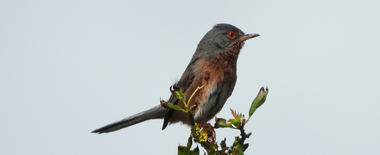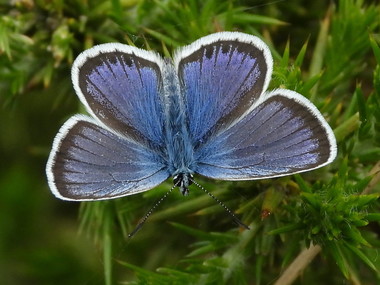|
The end of December saw the conclusion of the Wildlife Refuge at Exmouth Duck Pond for another winter. This season really has been the most enjoyable yet – we’ve seen less disturbance and greater species diversity than any year previously – and it’s not just us that think so! More of you than ever before have come to share your local wildlife stories with us, and the solace you have found though nature during another difficult year.
We’ve had more messages of support for the Wildlife Refuge than any year previously with lots of you reporting greater numbers of birds using the space and how nice it is to see them resting and feeding undisturbed. It’s been really heartening to arrive on site to see families sharing binoculars and enjoying the spectacle of thousands of waterbirds feeding as the tide recedes. The watersports community (kitesurfers, paddleboarders and windsurfers) have been extraordinarily supportive and deserve special mention – talking to new comers in our absence and helping everyone understand the importance of avoiding the Wildlife Refuges.
The support of the community is vital to the success of voluntary schemes like this. It’s an excellent example of how together we can make a difference – how small changes by individuals can have a big impact for wildlife. In a year that we’ve seen a 52% loss of biodiversity within the UK reported, devastating declines in insect life, and once numerous Dunlin join the UK Red List, it’s nice to have a good news story to end on.
Exmouth Wildlife Refuge is active between September 15th and December 31st, whilst the Dawlish Warren refuge is active all year. We ask everyone to avoid these areas, creating a space for shorebirds to rest and feed undisturbed.
 Dartford warbler - East Devon Pebblebed Heaths. Photo credit: David Boult
Affectionately known as ‘Darties’, Dartford warblers are one of the iconic birds of the Pebblebed Heaths. These charismatic little birds can be seen on the heaths all year round. This is a little unusual for warblers as many others, such as the whitethroat or willow warbler, migrate to warmer countries during the winter months, returning to the UK to breed in the spring. Not so the Dartie, these birds are resident and so make their home on the heath all year round, often not moving very far during their lifetime.
Kim Strawbridge, Reserves Manager, Pebblebed Heaths Conservation Trust
 Silver-studded blue butterfly - Pebblebed Heaths - Photo credit: David Boult
Another year has flown by for the RSPB Aylesbeare Common Team. The work we do on the heath follows a similar pattern each year, the winter months focus on scrub clearance and habitat creation whilst the summer months involve bracken management and infrastructure improvements. Rather than boring (or entertaining) you with all the grisly details, this update will focus on some of our stand-out moments from the last year.
Becky Smith, RSPB Residential Volunteer
|